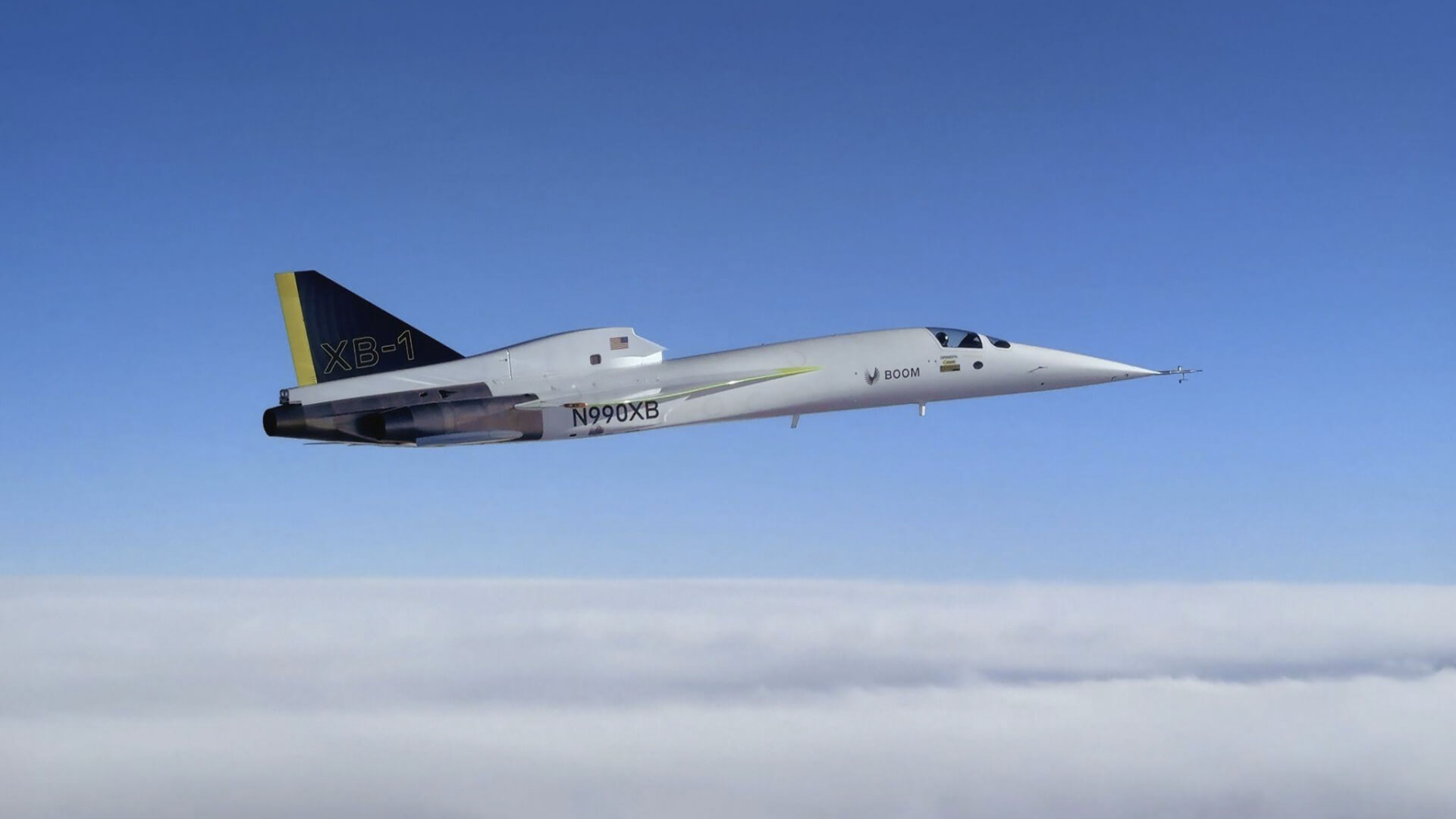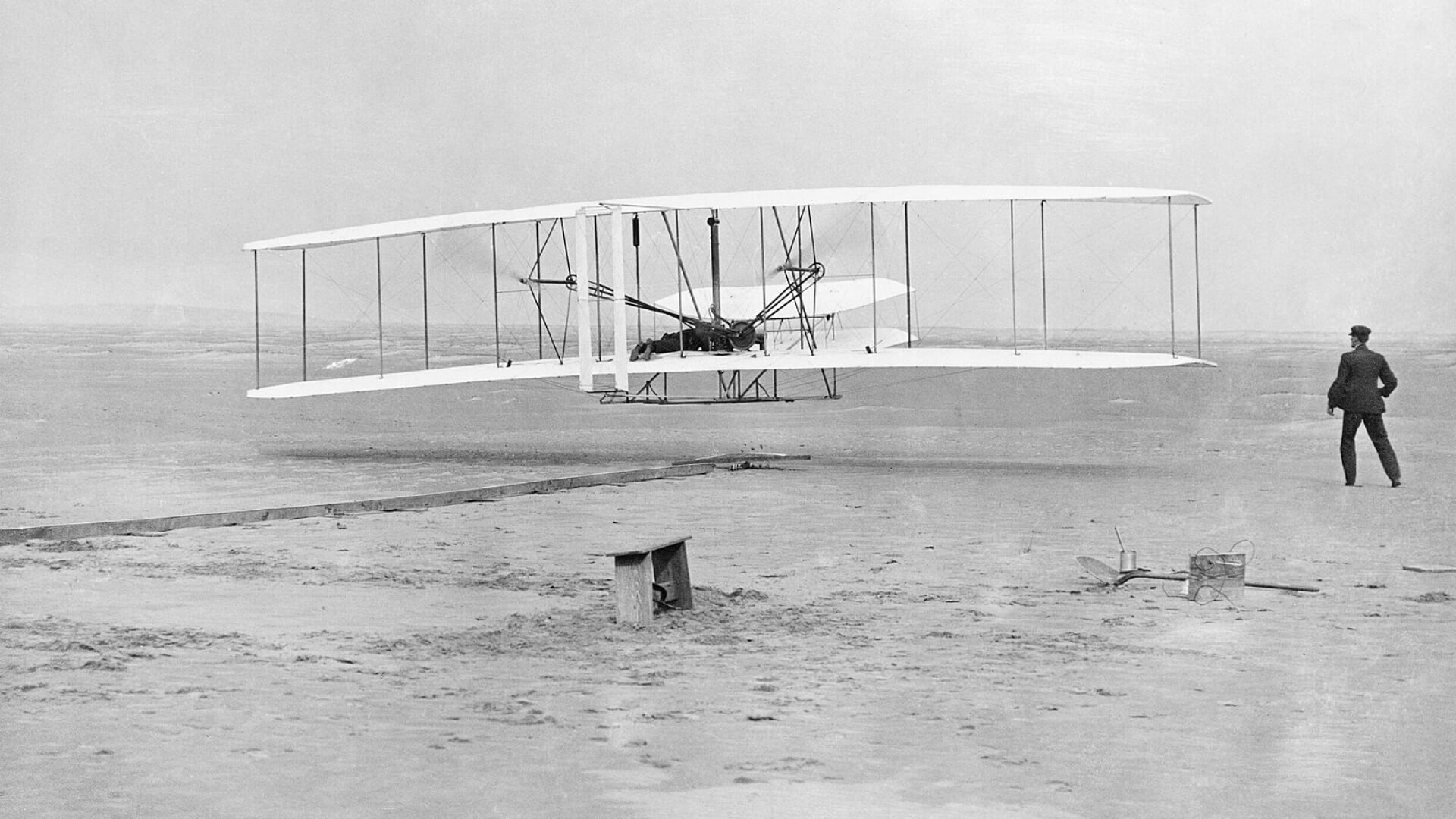Ben Murphy was always passionate about travel — and like many kids he wanted to be an astronaut, finding a passion for the more technical aspects of flying. So he decided to marry the two, which naturally led him to the aviation industry. His first job after receiving his Masters in Aerospace Engineering was at GE Aviation, where he supported flight tests and supersonic engine development, including engines used on the F-15, F-16, and new programs.
While he was working on engines, he also got into learning about alternative fuels. So when he came to Boom 5 years ago, he started as a propulsion engineer for XB-1. During his time working on Boom’s supersonic demonstrator, he continued to integrate his expertise on the technical properties of alternative fuels.
This led him to now being Boom’s Vice President of Sustainability, where he oversees not only Boom’s net zero carbon strategy, but also developing SAF partnerships and representing Boom on the International Civil Aviation Organization Committee on Aviation Environmental Protection (ICAO/CAEP) WG1 and WG3, supporting noise and emission standards.
How do your two specialities work together naturally?
The technical capabilities of understanding how propulsion systems work and how combustion works, naturally transitioned over to my role on sustainable aviation. There are a lot of opportunities presented when you put on a technical hat and think about how we can reduce our emissions and noise on our path to net zero carbon.
While my role is now focused on strategy development and guiding our commercial endeavors to achieve net zero, I am able to leverage my technical expertise when I evaluate what technologies we pursue, the partnerships we form, and how we tackle our sustainability challenges to make sure we are bringing supersonics back in a socially responsible manner.
Why did you choose to work at Boom?
I’ve been at Boom for over five years now and I love our mission and the opportunities presented by a fast moving startup. When you look at innovation, it really takes a startup to unlock the future. Our mission alignment of making the world more connected really matters to me, especially because it is built on a foundation of safety and sustainability.
Being environmentally minded and having that foundation of sustainability from the start of the company was really critical for me joining Boom. We are not just working to change the speed at which we fly, but also shifting the paradigm on sustainable aviation by committing to net zero carbon by 2025.
What technologies are you most excited about when it comes to sustainable travel?
There are a plethora of them. I mean right off the bat, I would be remiss not to say supersonic flight. Getting to your destination in half the time makes travel a lot more accessible and unlocks a variety of benefits that come with seeing the world, such as cultural understanding or the socioeconomic benefits to local communities. I think it is important to dive into the second order benefits of travel. Yes, you travel for work or for leisure, but in doing that you are able to better understand other cultures. I have had some really impactful experiences traveling to Southeast Asia and the Middle East, meeting people I would have otherwise never met.
But what I am most excited about is affordable, abundant renewable energy, which is going to enable sustainable travel at every level. This lets you take an electric vehicle from your house to the airport, be that a car or a eVTOL. That then lets you get on Overture and fly on e-fuels, sometimes called power to liquid SAF, that allows for net zero carbon operation. I am really excited about how the renewable energy revolution is enabling net zero travel in every mode, be it directly powered by vehicles or using renewable energy to pull carbon out of the air, recycling it into liquid fuel for those hard to abate industries.
I am thrilled to be working with AIR COMPANY, who does just that. AIR COMPANY has developed and deployed its single-step process for CO2-derived fuel production using renewable electricity. They will be providing us with up to 5 million gallons of their AIR MADE SAF to fuel Overture’s flight test program in Greensboro, North Carolina.
Why is industry collaboration so important when it comes to sustainability?
Industry collaboration is critical. No one company is going to solve climate change, especially given the interconnected nature of travel. This can come from a variety of different mechanisms. Boom’s Net Good Summit is a great example — it brings together thought leaders from across the travel industry, with a focus on innovation, education, and collaboration. We really need all three of those. Boom is focused on sustainable long haul aviation, and we can share lessons learned and decarbonization mechanisms with hotel companies or tourism operators who may not fully appreciate SAF and the actions that can be taken today. Similarly, we’re not tourism experts or operators, so we can learn a lot from destination management professionals on how we can promote responsible and equitable tourism at the destination.
Beyond that, it is really important that we work to innovate together and make sure we are pulling in the same direction. When it comes to renewable energy we need to have a collaborative mindset, rather than competitive, to ensure these new technologies are being rapidly deployed holistically.
What does travel as a net good mean to you?
I am an avid backpacker and hiker and I follow the leave no trace principle. In some way, this is how I think of travel more generally — leave nothing but footprints, take nothing but memories. I think that can apply to all of sustainable travel in considering how you can give more to the local economies and local communities than you are taking. There are so many ways to ensure travel remains a net good.
We are focused on this during our Net Good Summit and through our quarterly meetings with our Sustainable Travel Forum. The second Net Good Summit will focus on several themes that are critical to driving systemic change for sustainable travel—mobilizing the rapid scaling of sustainable technologies, breaking down silos across industries that serve travelers, and driving broad scale consumer education about sustainable solutions and practices.
What’s the most exciting thing you’ve done at Boom so far?
One of the most exciting things I’ve done when I was a propulsion engineer was testing XB-1’s J85 engines with SAF. We ran them successfully on 84% SAF, even though they were never built with the intent to run that way. It was exciting to push the boundaries of what is possible. Even today there’s a 50% blend wall on SAF and we are pushing forward to help the industry to remove that blend wall, which is critical to achieve net zero carbon aviation.
I would say in my current role, I am so excited about all of the amazing partnerships and relationships we have in the industry. To name a few, United Airlines committed to operate its fleet of up to 50 Overture airliners on up to 100% SAF and, as I mentioned earlier, AIR COMPANY will be powering Overture’s flight test program with SAF. We are so excited to be working with them as one of the leading power to liquid producers.
We’re also working with like minded suppliers, including Eaton, Safran, Collins, and others to decarbonize our supply chain and ensure we are implementing the latest and most sustainable technologies into Overture.
What are you most looking forward to while working at Boom?
We’ve laid out an industry leading roadmap to decarbonize. We’ve already taken significant actions as we switched to 100 percent renewable energy late last year and we continue to use that as we grow into our new facilities. We’ve utilized high quality offsets to achieve carbon neutrality in 2021, but I am most looking forward to continuing our emissions reduction roadmap in the next 3 years to achieve carbon neutrality by 2025.
Learn more about Boom’s plans to achieve net zero carbon by 2025 here.







